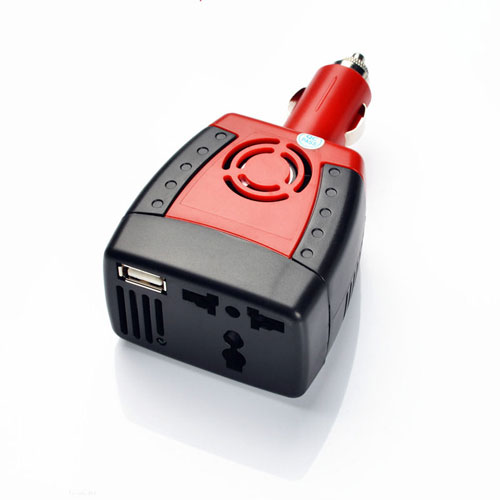A car inverter can convert 12V DC to 110V/220V AC. It is very useful on the go. But many people will be worried about if car inverters are harmful to storage batteries. For all products used in car storage batteries, there will be some impact on the storage battery more or less. Even more, if you fail to operate properly, the impact on the battery will be greater. Therefore, what we can do is to use the car inverters correctly, which will reduce the damage to the car battery.
The working principle of car inverter
The car starts the engine with the help of a storage battery, and the motor starts to generate electricity after the engine turns. Part of the electricity generated is used for engines (mainly spark plugs) and the rest is stored in the battery. When the car battery is full, the extra electricity is wasted.
The working of car inverters includes two states: engine start-up state and stop state. Under the start-up state, the extra electricity is used completely, which does not affect the car, while in the stop state, the storage electricity in the battery is used. Since the car storage battery is always in the state of charging - consuming - charging - consuming, it will not be affected by supplying a little power to the car inverter, but it should be noted that the engine neutrality should be started for 10-20 minutes to generate electricity. Otherwise, the power stored in the battery will be used up.
It is recommended not to turn on the air-conditioner after the flame-out, because it consumes too much electricity and can run out of the battery in a few minutes. Also, other appliances should be used as little as possible after the flame-out, because the service life of storage batteries will be reduced when they are in power shortage.
If the power inverter is only inserted into the cigarette lighter without connecting with other electrical appliances, it is equivalent to no load. If there is a load (i.e. a 65W laptop is connected), and the efficiency of the inverter is 90%, which is equivalent to supplying 72W power by the car battery. The service life of a car battery is related to the number of charges and discharges, so connecting with electrical appliances will increase the number of charges and discharges of the car battery at most, which certainly has an impact on the battery life, but not very large. However, for smaller-power appliances, the effect on the storage battery should be similar to that of turning on the radio. Good batteries will be more durable and relatively able to withstand this load. There are batteries specially designed for the frequent use of electronic equipment in the car, which will cause less damage to the battery and the car.
Tips for using a car inverter properly
- Car inverters should be used strictly by the user manual.
- The output voltage of the car power inverter is high-voltage AC power, which is placed in a narrow space and in a movable state, so you should be more careful. To avoid electric shock, you should put it in a safer place (especially away from children!). You’d better cut off its input power supply when not using it.
- Do not expose the vehicle power inverter to sunlight or the outlet of the heater. Had better not run the inverter in an environment over 40 degrees.
- Each car inverter has a certain value of DC input voltage, so the car battery voltage must be consistent with the DC input voltage of the inverter when the car inverter chooses the battery voltage. For example, a 12V car inverter must match a 12V battery.
- The output power of car inverters must be greater than the usage power of electrical devices, especially for appliances with high start-up power, such as refrigerators and air conditioners, which should be left with a larger margin.
- The positive and negative polarities of the car inverter must be correctly connected. The input side of the inverters is marked with positive and negative poles, and the diameter of the connecting line must be thick enough. Moreover, the length of the connecting line should be reduced as much as possible.
- Car inverters should be placed in a ventilated and dry place but not exposed to rain. Keep the inverter a distance of more than 20cm from the surrounding objects and away from flammable and explosive products. Avoid placing or covering other items on the car inverter.
